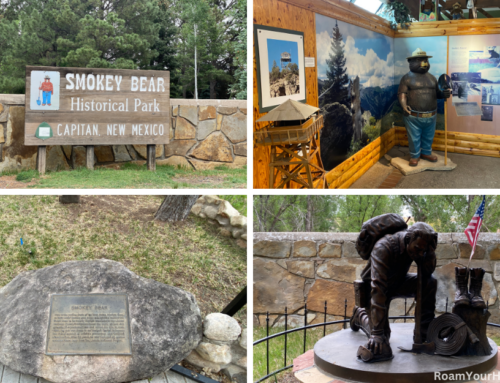
Billy the Kid’s Grave
In Fort Sumner, New Mexico, tucked beneath the wide-open desert skies of the Southwest, lies one of the most intriguing historical sites of the American West—the grave of the infamous outlaw Billy the Kid.
His tomb is a popular destination for Wild West History lovers like ourselves. It offers a captivating blend of legend, mystery, and a glimpse into the rugged frontier past.
Who Was Billy the Kid?
Born Henry McCarty and later known as William H. Bonney, Billy the Kid was a gunfighter, cattle rustler, and folk hero of the American West.
He is believed to have been born on September 17 or November 23, 1859, in an impoverished Irish neighborhood on New York City’s east side. Growing up, his family moved further west until settling in Silver City, New Mexico, where, to this day, you see where Billy the Kid lived. Soon thereafter, his mother died in September 1874 from tuberculosis, leaving him orphaned. Bill the Kid’s life of crime began shortly after.
William H. Bonney would go from an orphan teenager to a famous outlaw in about six years. His short but legendary life ended on July 14, 1881, at the hands of Sheriff Pat Garrett. His death essentially ended the Lincoln County War.
He reportedly killed 8 to 21 men and had a flair for daring escapes. He remains one of the most romanticized figures in Western lore. Famous while alive, his legacy only grew in death through books, movies, and countless tales around campfires.

Visiting Billy the Kid’s Gravesite
Billy the Kid is buried in the old military cemetery at Fort Sumner alongside two of his outlaw buddies, Tom O’Folliard and Charlie Bowdre. We visited on an early summer afternoon. When we pulled up, sunset was approaching, and to my surprise, we were not the only people in the parking lot. There were several other cars parked and another pulling out.
The cemetery is behind a building that looked like a closed gift store. The gate was open, and we walked right in. Standing there felt almost surreal. I’d spent my fair share of time reading about Billy the Kid. The cemetery is old and historic. The first grave we came to was not Billy the Kid’s but that of Joe Grant, who was murdered by Billy the Kid in 1880.
We walked around the small cemetery before arriving at Billy the Kid’s grave. An iron fence now encloses the graves of Billy the Kid, Tom O’Folliard, and Charlie Bowdre. A large tombstone lists all three men. The epitaph for the stone listing them reads just one word: Pals.
Bill the Kid’s grave is marked with an individual gravestone and a joint marker. Since its installation in the 1940s, the gravestone has been stolen and recovered three times. It is surrounded by an iron fence and bolted to the ground with a metal casing, a necessary measure due to the repeated thefts of the original tombstone.
We spent about 20 minutes visiting the grave, but you could spend as little as a few minutes if you only want to see the grave and leave. Billy the Kid’s grave is more than a marker in the ground — it’s a window into a time when outlaws roamed the plains and legends were written in dust and blood.

How to get there
Fort Sumner is a small town about a two-and-a-half-hour drive southeast of Albuquerque or southwest of Amarillo, Texas. The time it takes to get there is part of the charm—long stretches of open road flanked by desert plains and distant mountains, with the occasional roadrunner darting across your path. It’s the kind of journey that makes you understand the vast, untamed world that shaped legends like Billy the Kid.
Explore the Billy the Kid Museum
Just a short drive from the grave is the Billy the Kid Museum, which houses a great collection of artifacts, photographs, and memorabilia related to the Kid and his era. From saddles and pistols to newspaper clippings and personal items, the museum paints a fuller picture of life in 19th-century New Mexico.
The Mystery Lives On
To this day, controversy swirls around Billy the Kid’s death and burial. Some claim Pat Garrett didn’t kill him, and others believe the grave doesn’t hold his body at all. These myths and mysteries only add to the intrigue and make visiting the site feel like stepping into a living history chapter.
Tips for Your Visit
- Best time to go: Spring and fall offer mild temperatures and beautiful desert scenery.
- What to bring: Sunscreen, water, and a sense of curiosity.
- Nearby attractions: Explore the Bosque Redondo Memorial, which commemorates the tragic history of the Navajo and Mescalero Apache people forced into internment near Fort Sumner.
- Travel note: Cell service can be spotty



